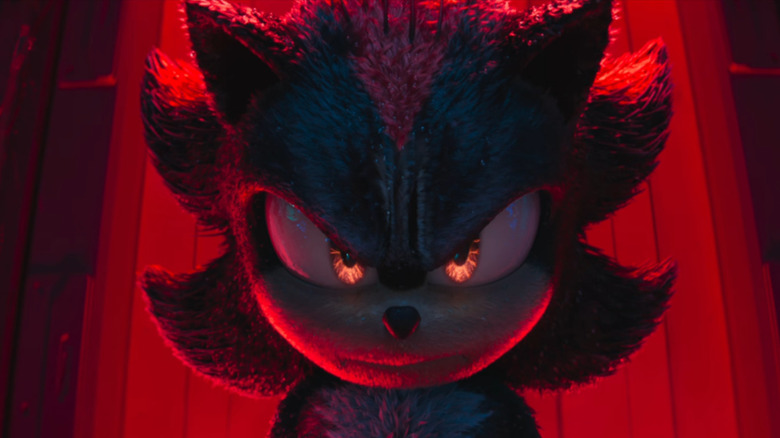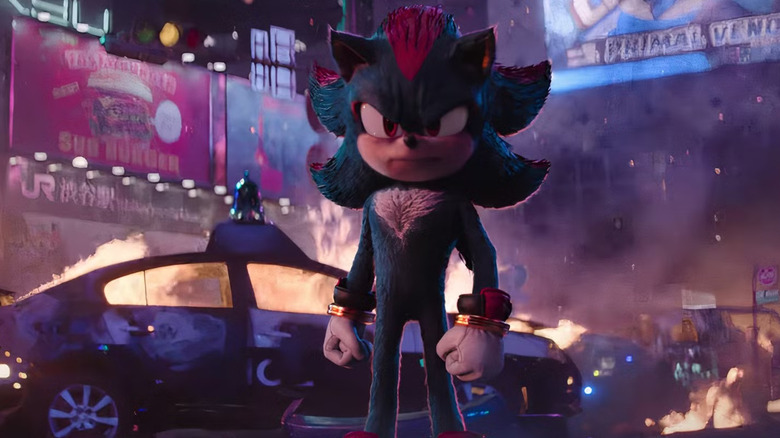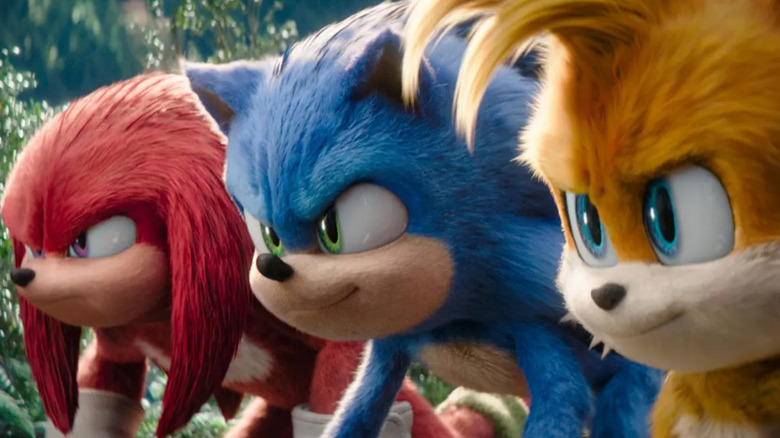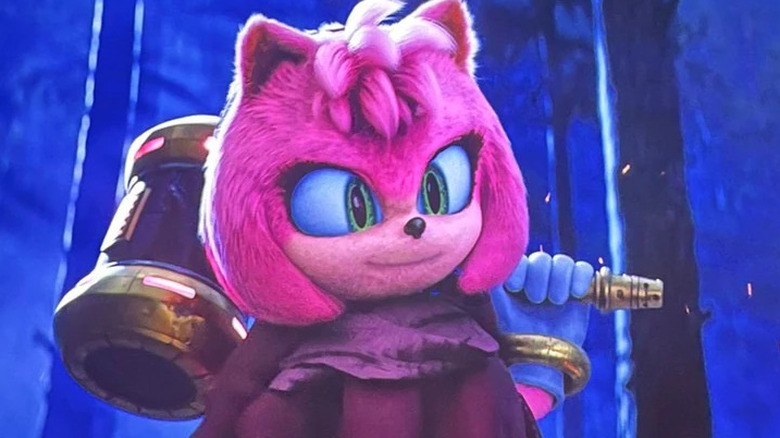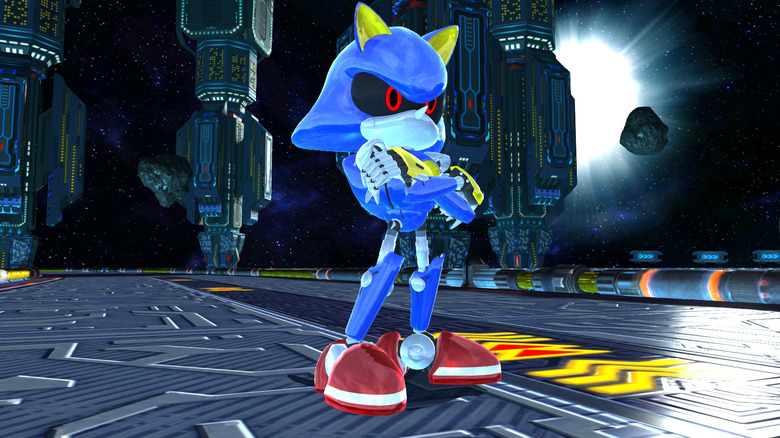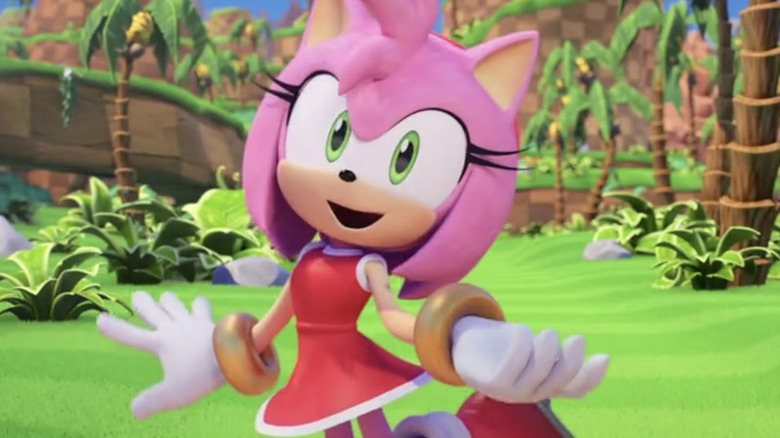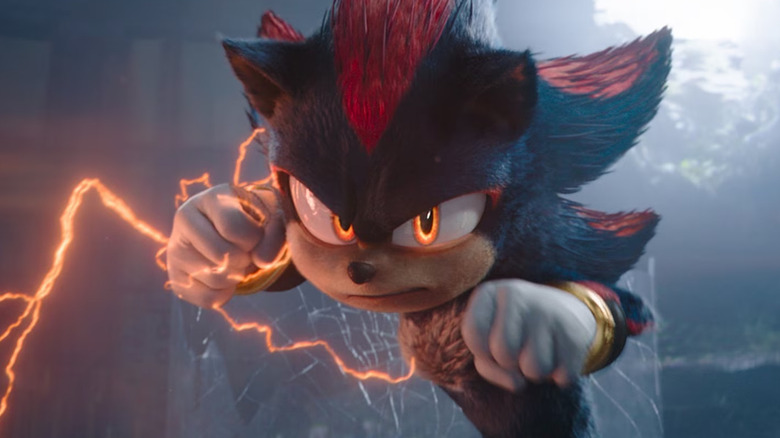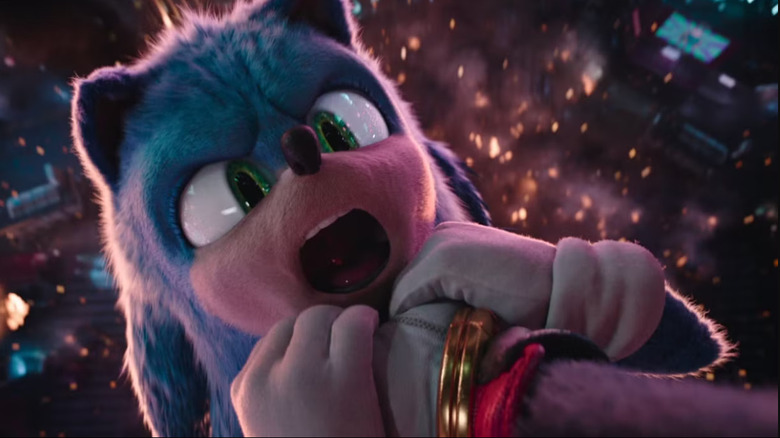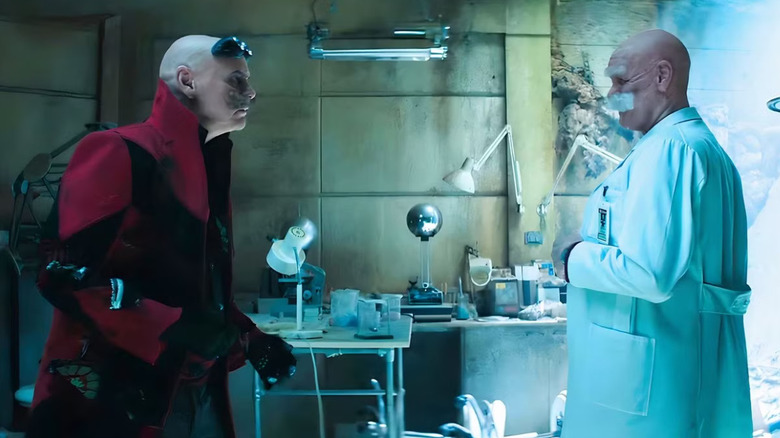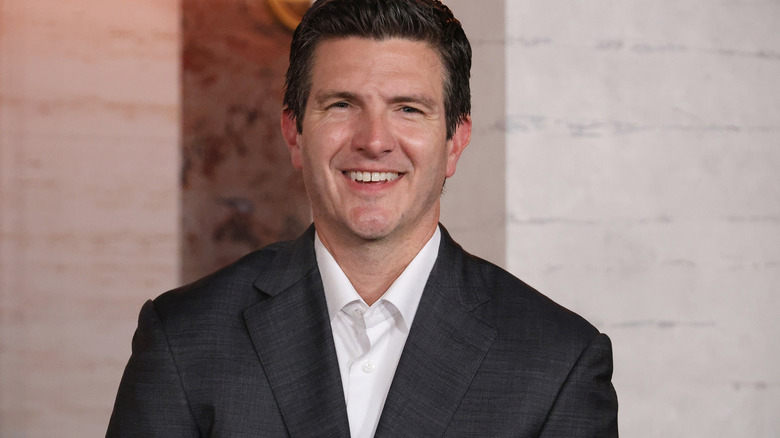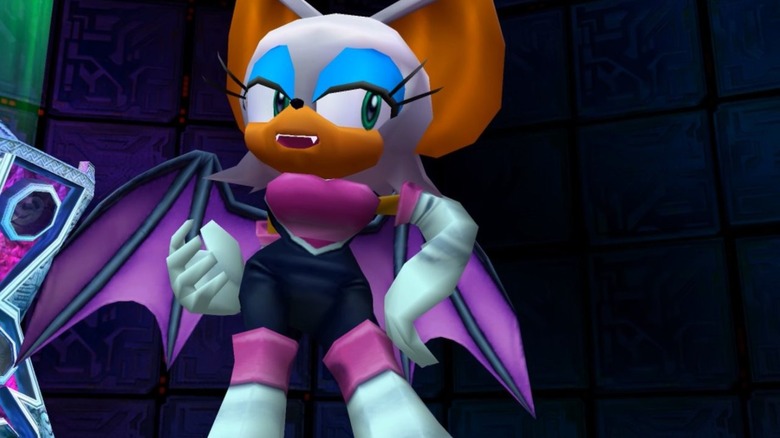Sonic The Hedgehog 3 Movie Ending, Mid-Credits And Post Credits Explained
Contains spoilers for "Sonic the Hedgehog 3"
The 2024 video game feature film adaptation "Sonic the Hedgehog 3" is a bona fide, runaway hit – it even beat out Disney's hyped-up "The Lion King" prequel "Mufasa" in its first weekend of release. Furthermore, and even more surprisingly, it has earned one of the highest Rotten Tomatoes rating for a video game movie ever. Heck, at 88%, it's beaten out other highly-anticipated blockbusters that came out this year, like Gladiator II, or matched them, like Wicked.
Obviously, with this kind of undeniable commercial and critical success, the talk of more "Sonic the Hedgehog" film sequels seems all but guaranteed at this point. In fact, Jeff Fowler — the director of the three "Sonic" films — seems game for more "Sonic the Hedgehog" sequels as well, stating to Collider, "[Sonic's] library of characters is so deep, and there are so many that fans would love to see."
So, what will happen in the upcoming sequels? There have been many, many "Sonic the Hedgehog" games — both mainline ones and various spin-offs — that Fowler and his team could have their pick of the litter when it comes to storylines and characters (such as fan favorite Big the Cat). However, like most franchise-minded blockbusters these days, "Sonic the Hedgehog 3" ends with multiple post-credits sequences, teasing what the sequels will (or at least might) entail. Judging by that, we should have a better idea of what "Sonic the Hedgehog 4" will be about.
What happens in Sonic the Hedgehog 3?
"Sonic the Hedgehog 3" begins with the brooding, black-quilled Shadow the Hedgehog (Keanu Reeves) escaping a highly-militarized G.U.N. prison island off the coast of Japan, ready to exact revenge on the organization after having been imprisoned by them for over 50 years. We find out later that he was set free by Dr. Ivo Robotnik's grandfather Gerald Robotnik (both played by Jim Carrey), who himself had recently been released from G.U.N. imprisonment. Both plan to destroy the world with Gerald's giant space laser weapon, dubbed "The Eclipse Cannon," after G.U.N. soldiers killed Maria Robotnik (Alyla Browne) 50 years ago, before each of their imprisonments.
We are then re-introduced to Team Sonic (a name that Knuckles obviously isn't a fan of), as Sonic the Hedgehog (Ben Schwartz), Miles "Tails" Prower (Colleen O'Shaughnessey), and the aforementioned Knuckles (Idris Elba) go for a friendly run to see who's actually the fastest one in the group ... which turns out was a ruse for Sonic as they set up his "Bearthday" party celebration. And, no, that's not a typo. Since Sonic's human parents Maddie (Tika Sumpter) and Tom (James Marsden) Wachowski don't know Sonic's actual birthday, they're instead celebrating the day Tom met Sonic on Earth (thus bearthday instead of birthday).
Eventually, Team Sonic are sent on a mission by G.U.N. to stop a rampaging Shadow, after he decimates G.U.N. soldiers in the middle of Tokyo, Japan ... where all three of them are immediately, and humiliatingly, defeated by him.
What happens at the end of Sonic the Hedgehog 3?
After their defeat, Team Sonic is attacked by Dr. Ivo Robotnik's drones. When confronting Ivo, however, it's revealed he is severely depressed — having gained considerable weight (finally looking like his video game counterpart) and spending his time watching telenovelas — and, furthermore, that the drones that attacked Team Sonic were stolen by his grandfather, Gerald. While Dr. Robotnik briefly teams up with Sonic and friends before he realizes his grandfather was behind the stealing of his tech, Ivo inevitably switches his allegiance to Gerald and Shadow, betraying Sonic and his friends in the process. However, Ivo believes Shadow and Gerald want to rule the world — not destroy it. When he finds out the Eclipse Cannon's true purpose, he works with Sonic in the end to help stop it, sacrificing himself by saying, "if I can't rule the world ... I might as well save it!"
Shadow gets a change of heart as well, when Sonic defeats him in his glowing yellow "Super Sonic" form, but spares Shadow's life — even after Shadow nearly killed Tom in an earlier battle. Sonic's mercy proves to Shadow that forgiveness is more powerful than revenge, and he is convinced to help Team Sonic and Ivo stop Gerald's genocidal laser weapon. In the ensuing climax, Shadow seemingly dies alongside Ivo in the aftermath of the Eclipse Cannon's explosion.
In the end, Sonic, Knuckles, and Tails do a re-match race, this time for real, running into the sunset as the closing credits begin — accompanied by an awful Jelly Roll song.
What happens in the mid-credits sequence?
After the initial closing credits concludes (and that Jelly Roll song mercifully ends), we are treated to a mid-credits sequence. The scene picks up not long after the last scene of the film, as Sonic finds himself losing track of time during the race, and — due to his immense super-speed — traverses all the way to New York City at night. Sonic thinks this is amusing at first, until a cybernetic version of Sonic — Metal Sonic, looking exactly like his video game counterpart — gets ready to shoot and kill Sonic by shooting a missile at him.
Afterward, we see an explosion in the distance, and it looks like Metal Sonic succeeded in its mission. However, Sonic sped out of the way to safety, eventually taking the Metal Sonic out, turning it into a scrap heap. Unfortunately, Sonic gets surrounded by an army of Metal Sonics, and he looks scared as they all fly up, about to pounce. Luckily, just as it looks like the audience is going to be left on a cliffhanger for a sequel to resolve ... all the Metal Sonics start to explode one-by-one out of nowhere.
Sonic is relieved, and sees the person who saved him is wearing a badass hood and cloak, wielding a giant hammer, and landing in a classic superhero pose. Then, Sonic's savior dramatically pulls down their hood, to reveal ... the fan-favorite female pink hedgehog, Amy Rose!
Who is Metal Sonic?
Metal Sonic made its enigmatic debut in 1993's "Sonic the Hedgehog CD," which came out right after 1992's "Sonic the Hedgehog 2" and preceding "Sonic the Hedgehog 3" by a year. The game was released for the Sega CD, which began as an add-on attachment to the SEGA Genesis console that allowed it to play CD-ROM games, and later became its own ill-fated standalone device.
Due to Metal Sonic's popularity upon its introduction, it has since made an appearance in almost all subsequent Sonic games, including spin-offs like "Sonic the Fighters," "Sonic R," and even the "The Murder of Sonic the Hedgehog" visual novel. It has also appeared in most other ancillary "Sonic the Hedgehog" media, such as various comic book lines and cartoon series.
Metal Sonic itself was designed by Dr. Robotnik to mimic and outperform the original Sonic the Hedgehog, and is thus one of Sonic's greatest enemies. By being a robot built as a henchman for Robotnik, Metal Sonic has a noticeably sadistic personality, and is on a mission to kill and dominate the real Sonic the Hedgehog to prove its superiority to the original. Worse, even after defeat, Metal Sonic usually returns, updated and even stronger than before.
What role Metal Sonic will play in the films remains to be seen, especially considering the possible deadly fate Dr. Robotnik in the film's continuity. Will Metal Sonic now be made by G.U.N., possibly designed after Shadow rather than Sonic as a contingency? Only time will tell, we suppose.
Who is Amy Rose?
Like Metal Sonic, the cute, pink-quilled anthropomorphic female hedgehog Amy Rose also made her first video game appearance in 1993's "Sonic the Hedgehog CD" for the SEGA CD. However, she actually made her first canonical appearance in an early "Sonic the Hedgehog" manga from 1992, after SEGA marketing believed that Sonic, as the console's flagship mascot, needed a "Minnie" to Sonic's "Mickey". While not a playable character in her initial debut in "Sonic the Hedgehog CD," Amy quickly became a fan favorite and eventually a playable character in 1994's "Sonic Drift" for SEGA Game Gear, the console's handheld model. Amy is now a consistent main character in current 3D "Sonic the Hedgehog" games, including the recent "Sonic Generations" from 2023. She has also appeared as a main protagonist in most ancillary media, like the CG-animated kid's series "Sonic Prime."
Amy herself is eternally optimistic, bubbly, and brave. She also has a huge crush on Sonic, which is usually unrequited by the blue speedster in most iterations. However, despite her sometimes erratic behavior, Amy Rose is still a more than capable fighter, using her speed, agility, and powerful Piko Piko Hammer (briefly seen in the aforementioned mid-credits sequence in "Sonic the Hedgehog 3") to take out enemies with ease. She's also one of the leaders of the resistance against Dr. Robotnik in the later games in the "Sonic" series. It will be exciting to see how the films handle her character in the future.
What happens in the post-credits scene?
Unlike the relatively long mid-credits scene prior to it, the post-credits scene is itself relatively brief, even by the standards of ubiquitous post-credits sequences. In it, we see a crater in the middle of a desert, full of flaming wreckage. This is presumably debris from the destroyed Eclipse Cannon that fell to Earth after its destruction. The camera lingers on something buried in the dirt ... something metal. As the camera focuses on this object, the audience comes to realize that its one of golden metal cuffs that Shadow the Hedgehog wore around his wrists throughout the film — called "Limiter Rings" in the game, but never referenced in the film itself.
Eventually, after a few beats, we see a close-up angle of Shadow's iconic rocket shoes as they march in the dirt towards this semi-buried Limiter Ring. The white-gloved hand of Shadow picks up the Limiter Ring before re-clamping it on his wrist. Once the ring makes a metal "clink" noise as it connects, the film smash cuts to black, and the audience (presumably) goes wild.
What the end of Sonic the Hedgehog 3 means
When we look at the ending of the "Sonic the Hedgehog 3" film, it seems that the contrast between Sonic and Shadow the Hedgehog will give us the greatest clue into what the main lesson the film is trying to impart. As Commander Walters (Tom Butler) tells Sonic towards the beginning of the film, both hedgehogs have similar backstories as powerful aliens who get stranded away from their homes and stuck on Earth. However, the difference is Sonic (eventually) found love and family by getting adopted by Tom and Maddie, while Shadow was immediately sequestered in a secret military base, his only true companion being the young Maddie Robotnik, until she was killed by G.U.N. and he was imprisoned for decades.
These events made Shadow, understandably, bitter and rage-filled. Then, when Sonic believes Shadow killed Tom, Sonic too becomes outraged and vengeful. He uses the Master Emerald to become Super Sonic, and almost kills Shadow in cold blood. However, when Shadow tells Sonic that he made the same decision as Shadow, Sonic realizes revenge isn't the way, and spares Shadow's life. This act of mercy lets Shadow reflect on how Maddie's love affected him, rather than focusing entirely on her death. As Sonic tells Shadow, the pain of her loss may never go away, but it can be overwhelmed by the lessons her existence gave him.
Essentially, pain and anger are understandable emotional reactions to tragedy, but you should not let them control you.
Another possible explanation of the ending
Family is a major theme running through the entirety of the "Sonic the Hedgehog" films. In the first film, Sonic seeks out a connection after seeing the guardian who raised him on his home world — the anthropomorphic maternal owl Longclaw — get killed in front of him right before he's sent to live alone on Earth. In that film, he becomes fascinated with the local town sheriff Tom from the sleepy town of Green Hills, Montana. After an adventurous road trip, the two bond and become a loving found family. From that vantage point, it's obvious that family in the Sonic films is synonymous with love and harmony. This is reinforced with Jim Carrey's interpretation of Dr. Ivo Robotnik as a resentful orphan, lashing out at the world. To support that theme, eventually Knuckles and Tails join the Wachowskis as a family in "Sonic the Hedgehog 2."
However, "Sonic the Hedgehog 3" shows a flip-side to that — that family can also be used to facilitate abuse, manipulation, and trauma. While Gerald Robotnik acts at first like an ally to Ivo, it turns out Gerald is just using him for his tech. He even emotionally devastates him by cruelly remarking how pathetic Ivo's fawning is, and that he's "no Maria." Eventually, Gerald even resorts to violence to force Ivo to do what he wants. It also seems significant that the loving family in the film — the Wachowskis and Team Sonic — are a found family, while the abusive one is blood-related.
What has the cast and crew said about the ending?
When speaking to ScreenRant, director of "Sonic the Hedgehog 3" Jeff Fowler vaguely explained why Metal Sonic and Amy Rose were chosen for mid-credits sequences, stating, "What determines what characters get chosen ... [is] 'What would be new? What would be interesting? What would be a fun direction to take our world?' Like Shadow being introduced at the end of 'Sonic 2', we knew that he was going to be such an exciting character and was really going to shake things up in the movies. The choice was clear."
That last statement from Fowler is significant, because "Sonic the Hedgehog 3" takes almost all of its cues from the 2001 SEGA Dreamcast entry "Sonic Adventure 2." The introduction to Shadow the Hedgehog, G.U.N., Gerald Robotnik, the Eclipse Cannon, Maria Robotnik ... all of this originates from that game. While, of course, liberties were taken with the story to make it cinematic and fit with the first two "Sonic" films, "Sonic Adventure 2" was nonetheless obviously the blueprint for the threequel.
Meanwhile, as mentioned above, Metal Sonic and Amy Rose both made their video game debuts in the 1993 Sega CD game "Sonic the Hedgehog CD," which points to that being the main influence on the fourth "Sonic" film. That game's story follows Dr. Robotnik trying to capture the magical Time Stones, and subsequently deals with time-travel and alternate realities. If true, the time travel conceit could be a really fun opportunity for visually interesting set-pieces.
What do these scenes mean for the Sonic the Hedgehog film franchise?
Despite the "Sonic the Hedgehog CD" theory, there's not much concrete about where the "Sonic the Hedgehog" franchise will go from here. Certainly, Amy Rose will make an appearance in a hypothetical "Sonic the Hedgehog 4" — presumably snagging an unlikely A-lister to voice her — and it seems just as certain that more Metal Sonics will make an appearance as well.
One thing these scenes could also point to is the potential for more characters from the "Sonic the Hedgehog" video games being introduced alongside Amy, possibly most of the roster of Sonic's resistance allies — such as Rouge the Bat, Big the Cat, Vector the Crocodile, etc. The plot could even be about them coming to Earth to get Sonic to help them on his home world. Honestly, getting away from Earth could be a breath of fresh air for the "Sonic the Hedgehog" film franchise in general, especially since Ivo Robotnik is seemingly dead now (and is more likely to stay dead, unlike Shadow, due to him not having Shadow's powers that would let him survive the Eclipse Cannon's explosion, as well as Jim Carrey's semi-retirement from acting).
Speaking of Shadow, another thing the post-credits sequences seemingly confirm is the survival of the indomitable hedgehog. Due to him being such a fan favorite for "Sonic the Hedgehog" aficionados, and a fixture of the game franchise going forward as well, it's a no-brainer for the character to return in a sequel.
